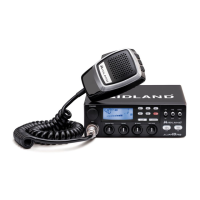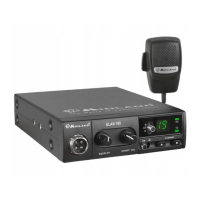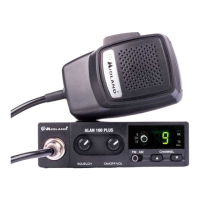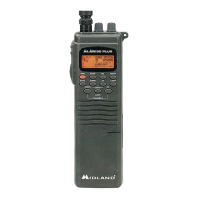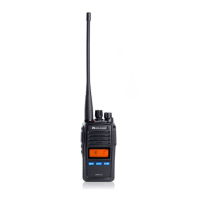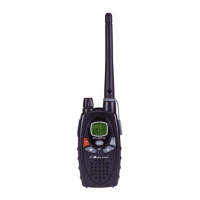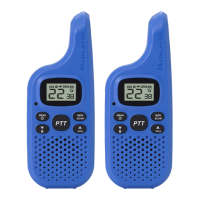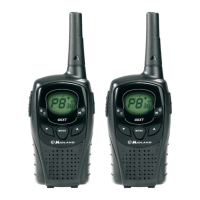Do you have a question about the Midland ALAN 48 PLUS MULTI B and is the answer not in the manual?
Details the channel selector knob and the multifunction backlighted display.
Explains the microphone jack for audio input and its placement.
Covers ON/OFF Volume, Squelch, RF Gain, and Microphone Gain controls for audio adjustment.
Explains the M1-M4 memory buttons and the EMG emergency channel button.
Details Q. UP/DOWN buttons, CB/PA selector, ANL/OFF, Local/DX, and AM/FM buttons.
Explains the SCAN button for seeking busy channels and the DW button for monitoring two channels.
Details the SO239 antenna connector, PA jack, and EXT jack for external speakers.
Explains the S. Meter jack for external meters and the 12.6V DC power supply cable.
Describes the PTT button, UP/DOWN buttons, and LOCK button on the microphone.
Provides safety and convenience tips for mounting the transceiver in a vehicle.
Details correct power supply connection and fuse replacement procedures.
Covers optimal antenna placement and the critical warning against operating without an antenna.
Steps for connecting the microphone, antenna, and adjusting controls for initial use.
Procedure for selecting operating frequency bands according to country.
Lists available frequency bands and their corresponding country codes and power levels.
Details general parameters such as frequency range, operating temperature, size, and weight.
Lists receiver characteristics including system, intermediate frequency, and sensitivity.
Details transmitter output power, modulation, frequency response, and current drain.
| frequency range | 26.565 - 27.99125 MHz |
|---|---|
| operating temperature range | -10°/+55° C |
| DC input voltage | 12.6V DC ±10% |
| size | 180 (L)x50 (H)x150 (P) mm |
| weight | 1kg |
| sensitivity in FM mode | 0.5µV for 20 dB SINAD |
|---|---|
| sensitivity in AM mode | 0.5µV for 20 dB SINAD |
| audio output power | 2.0 W @ 8 Ohm |
| audio distortion | less than 8% @ 1 KHz |
| image rejection | 65 dB |
| adjacent channel rejection | 65 dB |
| signal/noise ratio | 45 dB |
| current drain at stand-by | 250mA |
| output power | 4W max |
|---|---|
| AM modulation | 85% to 95% |
| FM modulation | 1, 8 KHz ± 0, 2 KHz |
| frequency response | 300 Hz/3 KHz |
| output impedance | RF 50 Ohm unbalanced |
| signal/noise ratio | 40 dB MIN |
| current drain | 1100mA |

